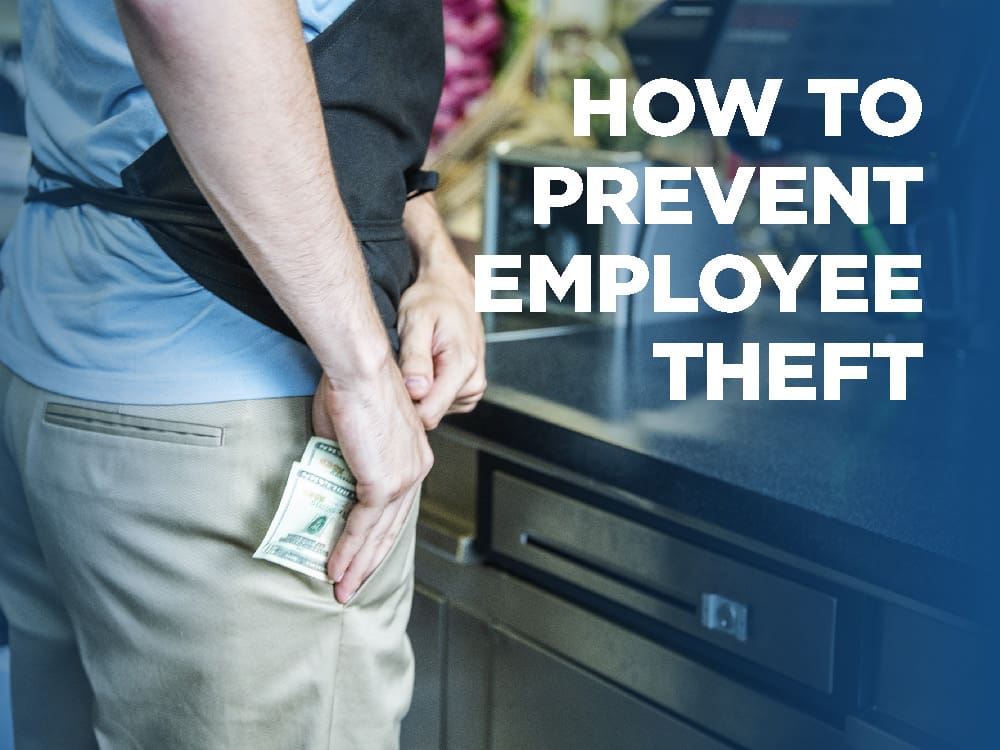- Home
- Loss Control
- Loss Control Insights
- How to Prevent Employee Theft
Companies around the world fail for a myriad of reasons. But it might surprise you to learn that shrinkage, or stealing from the business, is a top reason for company failures.
“While it’s startling to learn that shrinkage is a major reason companies don’t make it, it’s even more surprising that over 25% of those company losses are from employee theft,” Jerry Loghry, EMC’s Assistant Vice President of Corporate Security and Safety, says.
Employees can—and do—steal inventory, cash, trade secrets, intellectual property, client contacts and other valuables that are critical to the success of businesses. So, how can you protect your business? First, you must identify the many theft scenarios that could destroy your business. You must remain diligent, proactive and positive, and it is critical that you communicate protection processes, policies and expectations to your employees.
Here are some tips for reducing losses.
Prescreen applicants
Perform a background check and call all provided references of potential employees. this will help ensure you are making a good hire that is less likely to steal from your company.Present a posture of security
Make sure employees and subcontractors know you are committed to company security and that you will enforce established rules. Communicate how much the company spends on security equipment and procedures so they also take it seriously. After all, if their perception is that you don’t care, then why should they?Put equal attention on internal and external surveillance
Your system should keep tabs on high value areas or activities, including outside and inward dangers. For example, bank security cameras should record both customer and teller actions. This allows you to review footage and determine whether errors were honest mistakes or done deliberately.Be clear about repercussions of any theft or fraud and then enforce the rules equally across all departments and employee levels
This security rule is one that companies most frequently fail to follow. The same penalty should apply to the CEO as the janitor. If employees see that a high-level employee “gets away” with stealing $1,000, but a lower level employee is arrested for a $20 theft, you and your rules will lose credibility, which may lead to retribution.Schedule multiple employees
If the process is high-risk, assign at least two employees to work on the same process. High-risk processes include inventory management, cash handling and bill payments. This will help to prevent employee theft because the employees will hold one another accountable.Pay a livable wage
Employees who are paid well are less tempted to “get even” with companies. You can come out ahead by gaining employee loyalty—to both you and your company—resulting in less shrinkage. A living wage can also encourage workers to obey rules and work hard so they retain their good job.Provide a way for employees to report theft or fraud by a coworker
Employees notice what is going on around them. But not everyone feels comfortable reporting discrepancies or theft in person, so you may want to include several ways to turn in an offender. Try an internal web option, a phone hotline or text service. You will want to give the option to remain anonymous. Jerry says, “There are a lot of good people in your workplace. And if they see something wrong, they will want to let you know—especially if you have been proactive in informing them about the damage theft can do to your company and to their own livelihood.”
Get in touch
Need help? We’re here for you! Whether you have questions or need personalized assistance, your local office is ready to support you.
Loss Control Insights
Stay informed with the latest news and receive actionable safety tips, all carefully curated by our team of experts.
